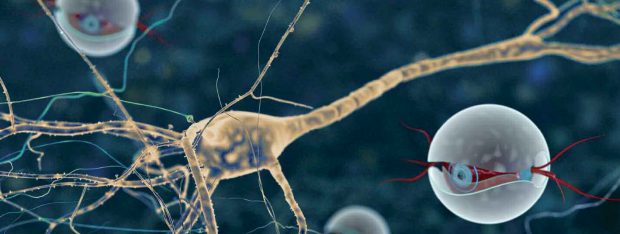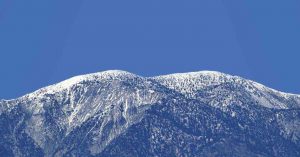 Imagine a future in which robots screen job candidates, universities introduce artificially intelligent tutors into classrooms and news services use a combination of social media and artificial intelligence (AI) to roll out breaking news.
Imagine a future in which robots screen job candidates, universities introduce artificially intelligent tutors into classrooms and news services use a combination of social media and artificial intelligence (AI) to roll out breaking news.
What’s Next For:
Revolutions?
Syria?
Mexico?
Japan?
The United States?
Earthquake Safety?
Climate Action?
California Water?
Climate Science?
Solar Energy?
California Fruit Farming?
Technology Investing?
Nanoscience?
Digital Storage?
Artificial Intelligence?
Cyber-Threats?
Social Media?
Space Exploration?
Science Museums?
The Sagehen?
Biodiversity?
The Blind?
Big Data?
Mental Illness?
Health Care Apps?
Maternity Care?
Etiquette?
Ballroom Dance?
Thrill Seekers?
Outdoor Recreation?
Funerals?
Writers?
Movies?
Manga?
Alt Rock?
Women in Mathematics?
Well, that future is now.
Preliminary success and our fascination with computers are leading to the exploration of a myriad of applications for artificial intelligence. Such is the interest, that the French government will spend $1.85 billion over the next five years to support research in the field.
But, there are some serious limitations to AI, says Gary Smith, Pomona’s Fletcher Jones Professor of Economics and author of the upcoming book The AI Delusion. “Thus far, artificial intelligence is designed to perform narrowly defined tasks, and it does it really well,” says Smith. “But moving outside of those tasks, computers have a lot of trouble. It is particularly evident when it requires knowledge of what you’re doing.”
Smith argues that artificial intelligence still lacks integrative thinking and has trouble deciphering meaning or patterns without context. He adds that in order to improve AI, researchers are studying how to get computers to think more like human brains, including research into how children learn.
“Our fascination with computers has led us to believe that artificial intelligence can make smarter decisions than humans,” says Smith.
This is worrisome when AI may be used for algorithmic criminology, for example. Courts all over the country are using computer models to make bail, prison-sentence and parole decisions based on statistical patterns that may be merely coincidental, but cannot be evaluated because they are hidden inside black boxes.
“At this point of development of AI, we should be very skeptical of turning important decisions to computers,” says Smith.
“The danger is not that computers are smarter than us. The real danger is that we think computers are smarter than us. And that’s not the case.”
 At the dawn of the digital age, storage was measured in kilobytes. Over the years, we’ve gotten used to megabytes, gigabytes and terabytes. But have you heard of petabytes, exabytes, zettabytes and yottabytes?
At the dawn of the digital age, storage was measured in kilobytes. Over the years, we’ve gotten used to megabytes, gigabytes and terabytes. But have you heard of petabytes, exabytes, zettabytes and yottabytes? Two words: Killer nanobots.
Two words: Killer nanobots. Artificial Intelligence? Think again.
Artificial Intelligence? Think again. The weathered sign on the old fruit stand at what remains of the last orange grove in Rialto, Calif., reads “Adams Acres” and “Since 1907.” Owner John Adams ’66, a third-generation fruit farmer with a passion for the perfect sweetness of a peach, waves his hand at a plum tree that is in full leaf but bears no fruit.
The weathered sign on the old fruit stand at what remains of the last orange grove in Rialto, Calif., reads “Adams Acres” and “Since 1907.” Owner John Adams ’66, a third-generation fruit farmer with a passion for the perfect sweetness of a peach, waves his hand at a plum tree that is in full leaf but bears no fruit. When we think about the future of solar energy, we usually think about new generations of solar cells that are more efficient or more affordable or longer-lasting—or some happy combination of the three. Lots of scientists and engineers are at work on that side of the equation, including Professor of Physics David Tanenbaum, whose current research involves the development of perovskite and organic polymer-based solar cells that should be cheaper to produce than the silicon variety.
When we think about the future of solar energy, we usually think about new generations of solar cells that are more efficient or more affordable or longer-lasting—or some happy combination of the three. Lots of scientists and engineers are at work on that side of the equation, including Professor of Physics David Tanenbaum, whose current research involves the development of perovskite and organic polymer-based solar cells that should be cheaper to produce than the silicon variety. The study of our changing climate has a newcomer: the social psychology of climate change. Professor of Psychology Adam Pearson is helping lead the way with the growth of a new branch he and his collaborators have coined “social climate science.”
The study of our changing climate has a newcomer: the social psychology of climate change. Professor of Psychology Adam Pearson is helping lead the way with the growth of a new branch he and his collaborators have coined “social climate science.” What’s a California winter with no snow-covered peaks? How will we even know it’s December?
What’s a California winter with no snow-covered peaks? How will we even know it’s December? Will the United States meet its emissions reduction goals as outlined in the Paris Agreement? Unlikely, says recent grad Tom Erb ’18. Without a strong, federal price on carbon—a long shot under the current administration—the U.S. will surely fail.
Will the United States meet its emissions reduction goals as outlined in the Paris Agreement? Unlikely, says recent grad Tom Erb ’18. Without a strong, federal price on carbon—a long shot under the current administration—the U.S. will surely fail. Someday—probably in some crowded city in a developing country—an earthquake will come along that causes a million casualties, warns seismologist and President of GeoHazards International Brian Tucker ’67.
Someday—probably in some crowded city in a developing country—an earthquake will come along that causes a million casualties, warns seismologist and President of GeoHazards International Brian Tucker ’67.